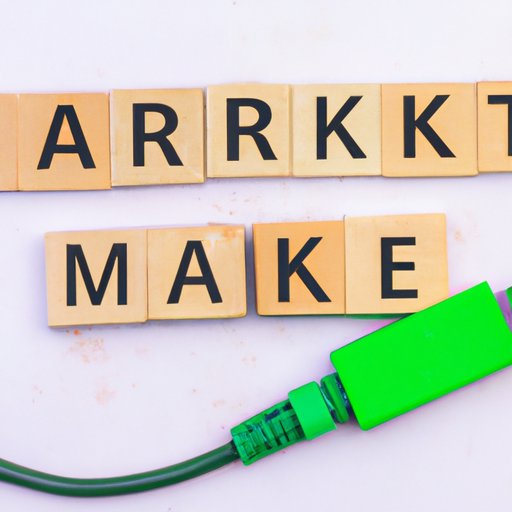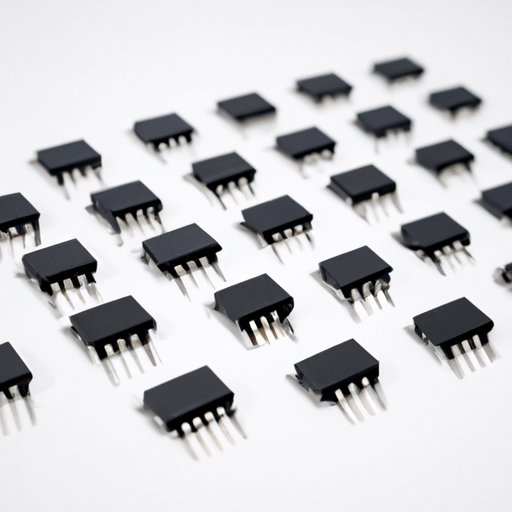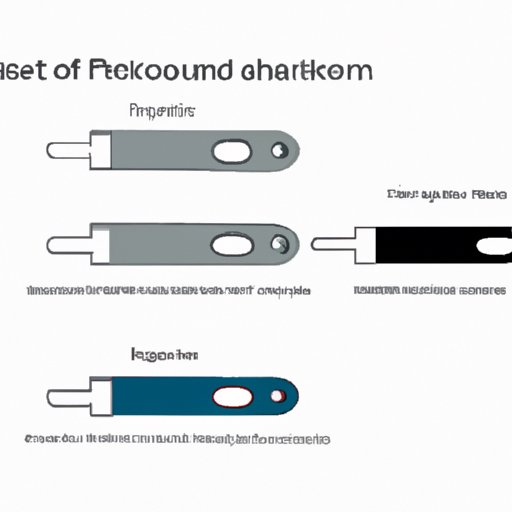What is the market size of Connector?
Title: Unveiling the Expansive Market Size of Connectors: A Comprehensive AnalysisIntroduction:
Connectors play a pivotal role in various industries, enabling the seamless transmission of signals, power, and data between electronic devices. As technology continues to advance, the demand for connectors has witnessed a significant surge. In this article, we will delve into the market size of connectors, exploring the factors driving their growth, key market segments, and future projections.1. Understanding Connectors:
Connectors are electromechanical devices that establish a connection between two or more electronic circuits. They facilitate the transfer of signals, power, and data, ensuring the smooth functioning of electronic devices. Connectors come in various types, including wire-to-board, board-to-board, circular, rectangular, and fiber optic connectors, among others.2. Factors Driving the Growth of the Connector Market:
a. Technological Advancements: The rapid evolution of technology, such as the Internet of Things (IoT), 5G, and autonomous vehicles, has fueled the demand for connectors. These advancements require reliable and efficient connectors to enable seamless communication and power transmission.b. Increasing Electronic Device Adoption: The proliferation of electronic devices, including smartphones, tablets, laptops, and wearable devices, has significantly contributed to the growth of the connector market. As the number of devices continues to rise, the demand for connectors to establish connections between them also increases.c. Automotive Industry Expansion: The automotive industry is a major consumer of connectors, with the increasing integration of electronic components in vehicles. The rise of electric vehicles, advanced driver-assistance systems (ADAS), and infotainment systems has driven the demand for connectors in this sector.d. Industrial Automation and Robotics: The growing adoption of automation and robotics in industries such as manufacturing, healthcare, and logistics has created a substantial demand for connectors. These connectors enable the seamless integration of various components and sensors, ensuring efficient operations.3. Market Segmentation:
a. By Type: The connector market can be segmented based on the type of connectors, including wire-to-board, board-to-board, circular, rectangular, fiber optic, and others. Each type caters to specific industry requirements, contributing to the overall market size.b. By End-User Industry: The connector market can also be segmented based on end-user industries, such as automotive, consumer electronics, telecommunications, industrial, healthcare, and aerospace. Each industry has unique connector requirements, driving the market growth in different sectors.4. Regional Analysis:
a. North America: The North American region, led by the United States, dominates the connector market due to the presence of major technology companies and a robust automotive industry.b. Europe: Europe holds a significant share in the connector market, driven by the presence of leading automotive manufacturers and the increasing adoption of automation in industries.c. Asia-Pacific: The Asia-Pacific region, particularly China, Japan, and South Korea, is witnessing rapid growth in the connector market due to the booming consumer electronics industry and the increasing adoption of advanced technologies.5. Future Projections:
The connector market is expected to witness continued growth in the coming years. Factors such as the increasing demand for high-speed data transmission, the rise of electric vehicles, the expansion of 5G networks, and the growing automation in industries will drive the market further. Additionally, the emergence of new technologies like edge computing and artificial intelligence will create new opportunities for connectors.Conclusion:
The market size of connectors is expanding rapidly, driven by technological advancements, increasing electronic device adoption, automotive industry expansion, and the growth of industrial automation. With the demand for reliable and efficient connectors across various industries, the connector market is poised for significant growth in the future. As technology continues to evolve, connectors will remain a critical component in enabling seamless communication and power transmission, further solidifying their importance in the global market.
What are the top 10 Integrated circuit IC popular models in the mainstream?
Title: Top 10 Popular Integrated Circuit (IC) Models in the MainstreamIntroduction:
Integrated circuits (ICs) have revolutionized the electronics industry by enabling the miniaturization and integration of complex electronic components onto a single chip. These tiny wonders power a wide range of devices we use daily, from smartphones and laptops to cars and medical equipment. In this article, we will explore the top 10 popular IC models that have made a significant impact in the mainstream market.1. Intel Core i7-10700K:
The Intel Core i7-10700K is a high-performance microprocessor designed for desktop computers. It features eight cores and sixteen threads, making it ideal for demanding tasks such as gaming, content creation, and video editing. With its advanced architecture and high clock speeds, the Core i7-10700K delivers exceptional performance and power efficiency.2. NVIDIA GeForce RTX 3080:
The NVIDIA GeForce RTX 3080 is a graphics processing unit (GPU) that has taken the gaming world by storm. It offers unparalleled performance and ray-tracing capabilities, making it a top choice for gamers and content creators. With its advanced AI features and massive memory bandwidth, the RTX 3080 delivers stunning visuals and smooth gameplay.3. Arduino Uno:
The Arduino Uno is a popular microcontroller board that has become the go-to choice for hobbyists and beginners in the world of electronics. It is based on the ATmega328P microcontroller and provides a simple and versatile platform for prototyping and creating interactive projects. The Arduino Uno's ease of use and extensive community support have contributed to its widespread popularity.4. Raspberry Pi 4 Model B:
The Raspberry Pi 4 Model B is a credit card-sized single-board computer that has gained immense popularity for its affordability and versatility. It features a powerful quad-core ARM Cortex-A72 processor and up to 8GB of RAM, making it capable of running a wide range of applications. The Raspberry Pi 4 is widely used in educational settings, IoT projects, and media centers.5. STM32F4 Discovery:
The STM32F4 Discovery is a development board based on the STM32F407 microcontroller from STMicroelectronics. It offers a comprehensive set of peripherals and features, making it suitable for a wide range of applications, including industrial control systems, robotics, and audio processing. The STM32F4 Discovery's affordability and extensive documentation make it a popular choice among embedded systems enthusiasts.6. Texas Instruments LM741 Operational Amplifier:
The LM741 is a widely used operational amplifier (op-amp) IC that has become a staple in analog circuit design. It offers high gain, low offset voltage, and excellent stability, making it suitable for a variety of applications, including amplifiers, filters, and signal conditioning circuits. The LM741's versatility and availability have made it a popular choice among engineers and hobbyists alike.7. Maxim MAX232:
The MAX232 is a dual driver/receiver IC that is commonly used for serial communication between microcontrollers and personal computers. It converts the TTL/CMOS logic levels to RS-232 voltage levels, allowing for reliable data transmission over longer distances. The MAX232's simplicity and low cost have made it a popular choice for serial communication in various applications.8. Microchip PIC16F877A:
The PIC16F877A is a widely used 8-bit microcontroller from Microchip Technology. It offers a rich set of features, including multiple I/O ports, timers, and analog-to-digital converters, making it suitable for a wide range of applications, from home automation to industrial control systems. The PIC16F877A's ease of use and extensive community support have contributed to its popularity.9. Atmel ATmega328P:
The ATmega328P is an 8-bit microcontroller that powers the Arduino Uno board. It offers a wide range of features, including multiple I/O pins, timers, and analog-to-digital converters, making it suitable for various applications. The ATmega328P's compatibility with the Arduino ecosystem and its low cost have made it a popular choice for DIY projects and prototyping.10. Qualcomm Snapdragon 888:
The Qualcomm Snapdragon 888 is a system-on-a-chip (SoC) designed for high-end smartphones. It features a powerful octa-core CPU, an Adreno GPU, and an integrated 5G modem, delivering exceptional performance and connectivity. The Snapdragon 888's advanced AI capabilities and energy efficiency make it a top choice for flagship smartphones.Conclusion:
Integrated circuits have transformed the electronics industry, enabling the development of smaller, more powerful, and energy-efficient devices. The top 10 popular IC models discussed in this article represent a diverse range of applications, from microprocessors and graphics cards to microcontrollers and SoCs. These ICs have not only revolutionized their respective fields but have also become integral components in the mainstream market, powering the devices we rely on daily.
What are the purchasing models for the latest Integrated circuit IC device components?
Title: Exploring Purchasing Models for the Latest Integrated Circuit (IC) Device ComponentsIntroduction (100 words)
Integrated circuits (ICs) have revolutionized the electronics industry, enabling the development of smaller, faster, and more efficient devices. As technology advances, the demand for the latest IC device components continues to grow. To meet this demand, various purchasing models have emerged, offering different benefits and challenges. In this article, we will explore the purchasing models for the latest IC device components, providing insights into their advantages, disadvantages, and suitability for different scenarios.1. Traditional Distribution Model (200 words)
The traditional distribution model has been the backbone of the electronics industry for decades. In this model, manufacturers sell their IC device components to distributors, who then sell them to customers. Distributors act as intermediaries, providing a wide range of components from multiple manufacturers, offering convenience and flexibility to customers. They also handle logistics, inventory management, and technical support.Advantages:
- Wide product range: Distributors offer a vast selection of IC device components from various manufacturers, allowing customers to find the right components for their specific needs.
- Consolidated purchasing: Customers can source multiple components from a single distributor, simplifying the procurement process and reducing administrative overhead.
- Technical support: Distributors often provide technical expertise, assisting customers in selecting the most suitable components and troubleshooting issues.Disadvantages:
- Higher costs: Distributors add a markup to the component prices, increasing the overall cost for customers.
- Longer lead times: As distributors act as intermediaries, the time taken for components to reach customers may be longer compared to other purchasing models.
- Limited control: Customers have limited control over the supply chain, relying on distributors for inventory management and order fulfillment.2. Direct Manufacturer Model (200 words)
In the direct manufacturer model, customers purchase IC device components directly from the manufacturers. This model eliminates the need for intermediaries, allowing for a closer relationship between customers and manufacturers.Advantages:
- Cost savings: By eliminating the distributor's markup, customers can potentially obtain IC device components at lower prices.
- Faster lead times: Direct purchasing from manufacturers reduces the time taken for components to reach customers, as there are no intermediaries involved.
- Enhanced control: Customers have more control over the supply chain, enabling better visibility and coordination.Disadvantages:
- Limited product range: Manufacturers may offer a limited selection of components compared to distributors, restricting customers' options.
- Higher order quantities: Some manufacturers have minimum order quantity requirements, making it challenging for customers with smaller-scale projects.
- Lack of technical support: Direct purchasing may not come with the same level of technical support as distributors, requiring customers to rely on their own expertise or seek assistance elsewhere.3. Online Marketplaces (200 words)
The rise of e-commerce has led to the emergence of online marketplaces specializing in electronic components. These platforms connect customers directly with sellers, which can include both manufacturers and distributors.Advantages:
- Competitive pricing: Online marketplaces foster competition among sellers, leading to competitive pricing and potential cost savings for customers.
- Wide product range: Many online marketplaces offer a vast selection of IC device components from various sellers, providing customers with numerous options.
- Convenience: Customers can browse, compare, and purchase components from the comfort of their own homes or offices, saving time and effort.Disadvantages:
- Quality concerns: Online marketplaces may have sellers of varying reputations, making it crucial for customers to research and verify the reliability and authenticity of the components.
- Limited technical support: While some online marketplaces offer customer support, it may not be as comprehensive as that provided by distributors.
- Potential counterfeit products: The risk of purchasing counterfeit IC device components exists on online marketplaces, necessitating caution and due diligence.4. Subscription-based Model (200 words)
A relatively new purchasing model gaining traction is the subscription-based model. In this model, customers pay a recurring fee to access a range of IC device components, similar to a subscription service.Advantages:
- Cost predictability: Subscription-based models offer fixed monthly or annual fees, allowing customers to budget and plan their expenses more effectively.
- Flexibility: Customers can access a wide range of components without committing to large upfront costs or minimum order quantities.
- Regular updates: Subscribers often receive updates on the latest IC device components, ensuring they stay up-to-date with the latest technological advancements.Disadvantages:
- Limited ownership: Subscribers do not own the components they use, which may not be suitable for customers with specific ownership requirements.
- Dependency on the provider: Customers rely on the subscription service provider for the availability and quality of components, which may pose risks if the provider faces issues or discontinues the service.
- Potential cost inefficiency: Depending on the frequency of component usage, a subscription-based model may not always be cost-effective compared to other purchasing models.Conclusion (100 words)
The purchasing models for the latest IC device components offer different advantages and disadvantages, catering to diverse customer needs. The traditional distribution model provides convenience and technical support but comes with higher costs. Direct manufacturer purchasing offers potential cost savings and faster lead times but may limit product options. Online marketplaces provide competitive pricing and convenience but require caution regarding quality and authenticity. Subscription-based models offer cost predictability and flexibility but may not suit customers with specific ownership requirements. Understanding these purchasing models empowers customers to make informed decisions when procuring the latest IC device components.
What product types are included in Signal switch?
Title: Exploring the Versatile Product Types of Signal SwitchIntroduction:Signal switches are essential components in electronic systems that enable the routing and control of electrical signals. They play a crucial role in various applications, including telecommunications, consumer electronics, automotive systems, and industrial automation. Signal switches come in a wide range of product types, each designed to meet specific requirements and provide unique functionalities. In this article, we will delve into the diverse product types of signal switches, exploring their features, applications, and benefits.1. Mechanical Signal Switches:Mechanical signal switches are the most basic and traditional type of signal switches. They utilize mechanical contacts to establish or break electrical connections. These switches are commonly found in simple applications where reliability and durability are essential. Mechanical switches are often used in industrial control systems, home appliances, and automotive applications. They are known for their robustness and ability to handle high current and voltage levels.2. Reed Switches:Reed switches are a type of electromechanical switch that utilizes a pair of ferromagnetic reeds enclosed in a glass tube. These switches are actuated by the presence or absence of a magnetic field. Reed switches are highly reliable, have a long lifespan, and exhibit excellent electrical isolation. They find applications in security systems, automotive electronics, medical devices, and telecommunications equipment.3. Solid-State Switches:Solid-state switches, also known as electronic switches, are based on semiconductor technology. These switches use transistors or integrated circuits to control the flow of electrical signals. Solid-state switches offer numerous advantages, including fast switching speeds, low power consumption, compact size, and high reliability. They are widely used in digital circuits, audio/video equipment, computer peripherals, and telecommunications infrastructure.4. Analog Switches:Analog switches are designed to handle continuous signals, making them suitable for audio and video applications. These switches provide a seamless connection between different signal sources, allowing for smooth signal routing. Analog switches are commonly used in audio mixers, video switchers, test and measurement equipment, and multimedia devices. They offer low distortion, high bandwidth, and low power consumption.5. Digital Switches:Digital switches are specifically designed to handle digital signals, making them ideal for data communication applications. These switches provide high-speed switching capabilities and are often used in networking equipment, data centers, and telecommunications infrastructure. Digital switches offer low insertion loss, high isolation, and excellent signal integrity. They are available in various configurations, including single-pole single-throw (SPST), single-pole double-throw (SPDT), and multi-pole multi-throw (MPMT).6. RF Switches:RF (Radio Frequency) switches are designed to handle high-frequency signals, typically in the range of several megahertz to gigahertz. These switches are crucial in wireless communication systems, cellular networks, radar systems, and satellite communication. RF switches offer low insertion loss, high isolation, and excellent linearity. They are available in various configurations, such as single-pole single-throw (SPST), single-pole double-throw (SPDT), and transfer switches.Conclusion:Signal switches are indispensable components in modern electronic systems, enabling the efficient routing and control of electrical signals. The diverse product types of signal switches cater to a wide range of applications, from simple mechanical switches to advanced RF switches. Each product type offers unique features and benefits, allowing engineers and designers to select the most suitable switch for their specific requirements. As technology continues to advance, signal switches will continue to evolve, providing enhanced performance, increased reliability, and improved efficiency in various industries.



